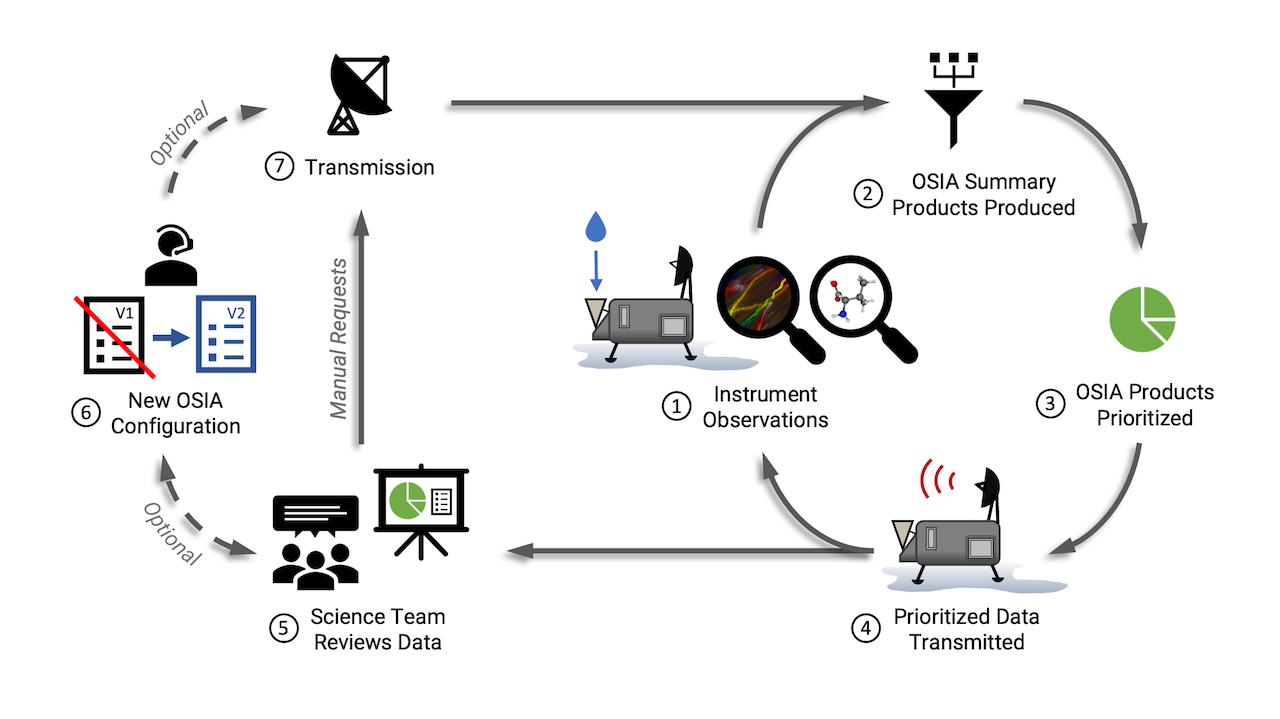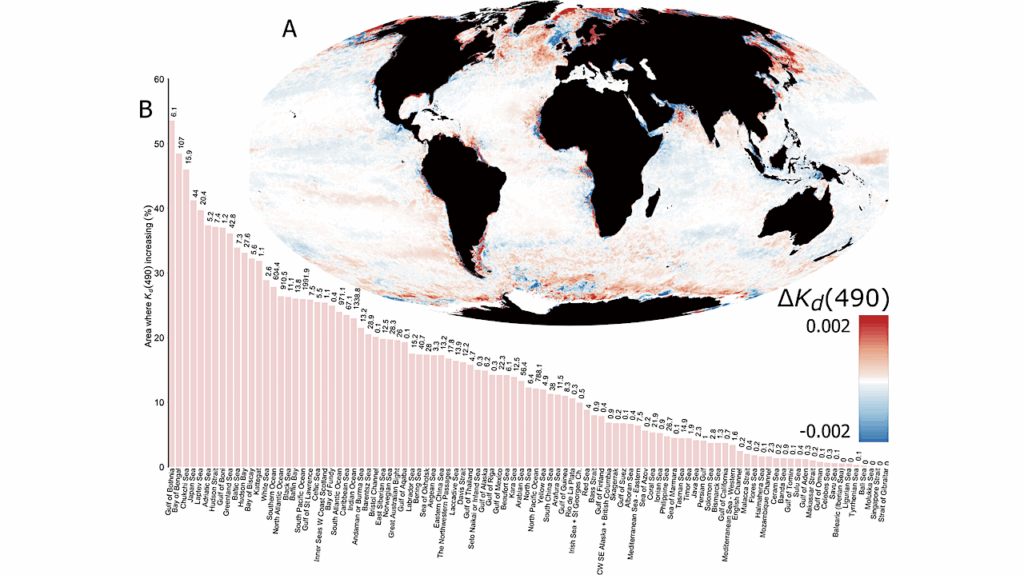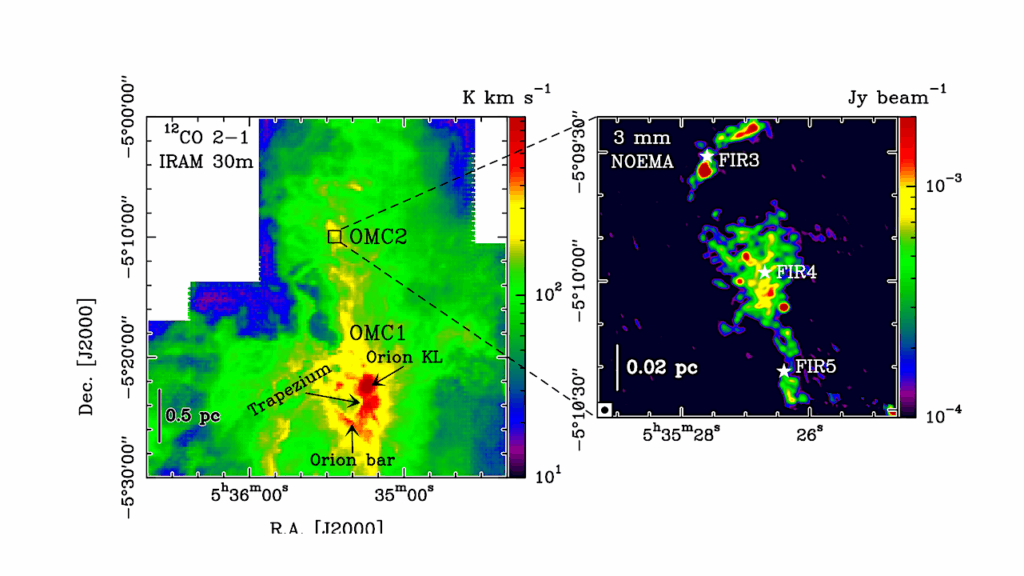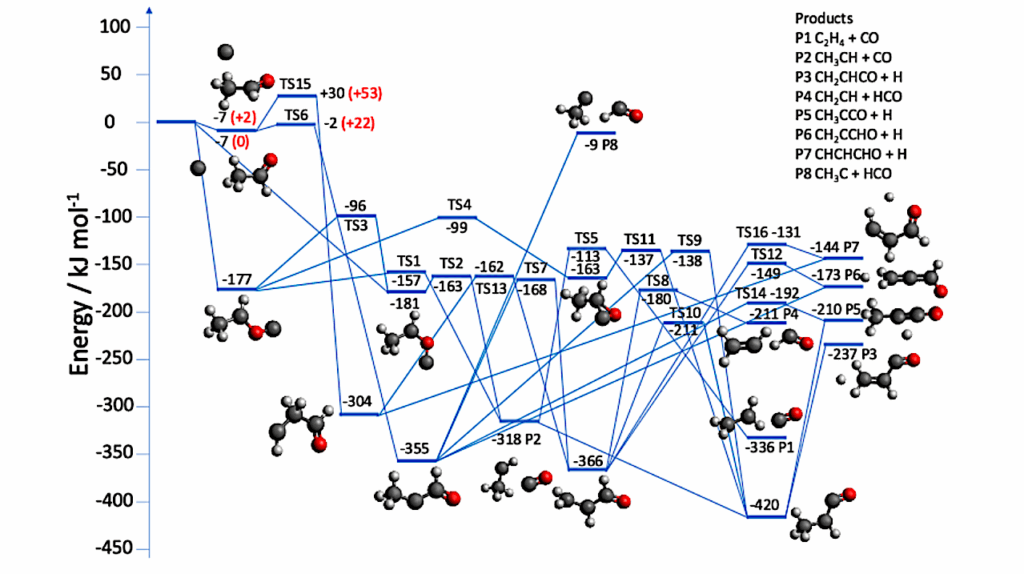Tricorder Tech: Onboard Science Instrument Autonomy for the Detection of Microscopy Biosignatures on the Ocean Worlds Life Surveyor

The quest to find extraterrestrial life is a critical scientific endeavor with civilization-level implications. Icy moons in our solar system are promising targets for exploration because their liquid oceans make them potential habitats for microscopic life.
However, the lack of a precise definition of life poses a fundamental challenge to formulating detection strategies. To increase the chances of unambiguous detection, a suite of complementary instruments must sample multiple independent biosignatures (e.g., composition, motility/behavior, and visible structure). Such an instrument suite could generate 10,000x more raw data than is possible to transmit from distant ocean worlds like Enceladus or Europa.
To address this bandwidth limitation, Onboard Science Instrument Autonomy (OSIA) is an emerging discipline of flight systems capable of evaluating, summarizing, and prioritizing observational instrument data to maximize science return. We describe two OSIA implementations developed as part of the Ocean Worlds Life Surveyor (OWLS) prototype instrument suite at the Jet Propulsion Laboratory. The first identifies life-like motion in digital holographic microscopy videos, and the second identifies cellular structure and composition via innate and dye-induced fluorescence.
Flight-like requirements and computational constraints were used to lower barriers to infusion, similar to those available on the Mars helicopter, “Ingenuity.” We evaluated the OSIA’s performance using simulated and laboratory data and conducted a live field test at the hypersaline Mono Lake planetary analog site. Our study demonstrates the potential of OSIA for enabling biosignature detection and provides insights and lessons learned for future mission concepts aimed at exploring the outer solar system.
Mark Wronkiewicz, Jake Lee, Lukas Mandrake, Jack Lightholder, Gary Doran, Steffen Mauceri, Taewoo Kim, Nathan Oborny, Thomas Schibler, Jay Nadeau, James K. Wallace, Eshaan Moorjani, Chris Lindensmith
Comments: 49 pages, 18 figures, submitted to The Planetary Science Journal on 2023-04-20
Subjects: Instrumentation and Methods for Astrophysics (astro-ph.IM); Earth and Planetary Astrophysics (astro-ph.EP); Artificial Intelligence (cs.AI)
Cite as: arXiv:2304.13189 [astro-ph.IM] (or arXiv:2304.13189v1 [astro-ph.IM] for this version)
https://doi.org/10.48550/arXiv.2304.13189
Focus to learn more
Submission history
From: Jake Lee
[v1] Tue, 25 Apr 2023 23:10:02 UTC (33,330 KB)
https://arxiv.org/abs/2304.13189
Astrobiology








